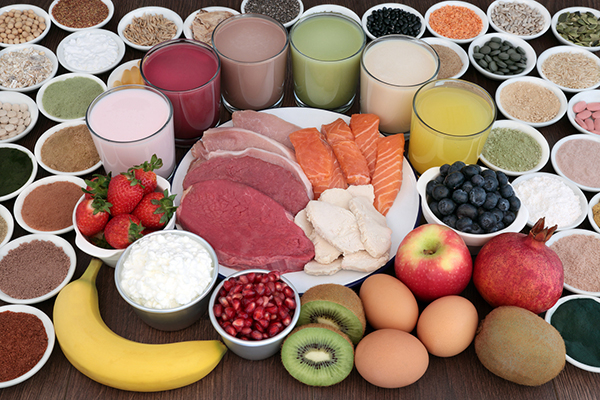Kitchen disruption: Better food through artificial intelligence

AI and other technology are being used to disrupt the food industry by helping develop new products and respond to consumer preferences and offer improved nutrition and flavor. Image: iStock/marilyna via AFP
Looking for that perfect recipe, or a new flavor combination that delights the senses?
Increasingly, players in the food industry are embracing artificial intelligence to better understand the dynamics of flavor, aroma and other factors that go into making a food product a success.
Earlier this year, IBM became a surprise entrant to the food sector, announcing a partnership with seasonings maker McCormick to “explore flavor territories more quickly and efficiently using AI to learn and predict new flavor combinations” by collecting data from millions of data points.
The partnership highlights how technology is being used to disrupt the food industry by helping develop new products and respond to consumer preferences and offer improved nutrition and flavor.
“More and more, food companies are embracing digitization and becoming data-driven,” said Bernard Lahousse, co-founder of Foodpairing, a startup with offices in Belgium and New York which develops digital food “maps” and algorithms to recommend food and drink combinations.
Lahousse said his company has “the largest flavor database in the world” that enables better food predictions based on both human preference and data analysis.
“Instead of using an expert panel or consumer panel we develop algorithms that can translate into how consumers view this product,” he said.
Digitizing flavors
New York-based Analytical Flavor Systems uses AI to create a model or “gastrograph” of flavor, aroma and texture to predict consumer preference of food and beverage products.
The platform, which recently raised $4 million in funding, aims to help companies “create better, more targeted and healthy products for consumers,” according to founder Jason Cohen.
It is not clear how much funding is going into AI food ventures, although overall food tech investment amounted to $16.9 billion in 2018, according to data from the investment platform AgTech Funder.
Brita Rosenheim, a food tech analyst and investor in Analytical Flavor Systems through the firm Better Food Ventures, said technology can help “digitize existing data” from human taste panels and speed up the process for developing new food products.
“The typical food product development process is long, and there are a lot of holes where there is no clear feedback on how the market is reacting, so this kind of technology can help,” Rosenheim said.
Foodpairing, for example, offers its “flavor intelligence” map based on molecular analysis, a Spanish dry-cured ham, for example, has elements described as “cheesy” or acidic while beetroots have a “woody” and “caramellic” flavor profile.
Lahousse said one of its notable pairing recommendations was oysters and kiwi, which became a signature dish at a well-known Belgian restaurant.
“Foodpairing maps out all possible pairings, but food is cultural and personal,” he said. “That is why we also use consumer behavior to increase the relevance of the pairings when we work with food companies.”
Basil from MIT
Researchers at the Massachusetts Institute of Technology illustrated how AI can be useful in determining optimal growing conditions by growing basil with supercharged flavor and hope to adapt that for other products.
“Artificial intelligence could give us the ability to utilize vast datasets of detailed agricultural information for the improvement of our food crops, faster than ever before,” said John de la Parra, head of MIT’s Open Agriculture Initiative.
Better data collection and standards are essential to enabling innovations in food, said Matthew Lange, a lecturer at the University of California at Davis and head of the IC3 Foods research center on food informatics working on data standards for food properties.
“I see a lot of people applying machine learning around flavor and nutrition in recipe development,” Lange said.
Lange said this could take off even more with better standards and data sharing to map flavors and aromas, opening up new possibilities for “personalized” foods and recipes that offer better flavor, nutrition and stainability.
“If we have the ability to ‘playback’ flavor and aroma it will create a veritable explosion in technology and the business models,” he said.
“Imagine being able to dial in (the preferred flavors and aromas) to create a sauce just to your liking,” he said. “Maybe you want to create something to have a sense of the beach, so this becomes an experience.”
MIT’s de la Parra said the notion of AI-personalized food is not likely soon.
“Personalized food on the individual level is a lofty goal,” he said. “To be done well, it would require large amounts of personal data, much of which might be complicated by questions of privacy and security. It is more likely, in the foreseeable future, that AI would be used to predict broad trends in consumer trends and tastes.” HM/JB
RELATED STORIES:
WHO warns of too sugary baby foods
20 million children not vaccinated in 2018: United Nations warns against ‘stagnation’